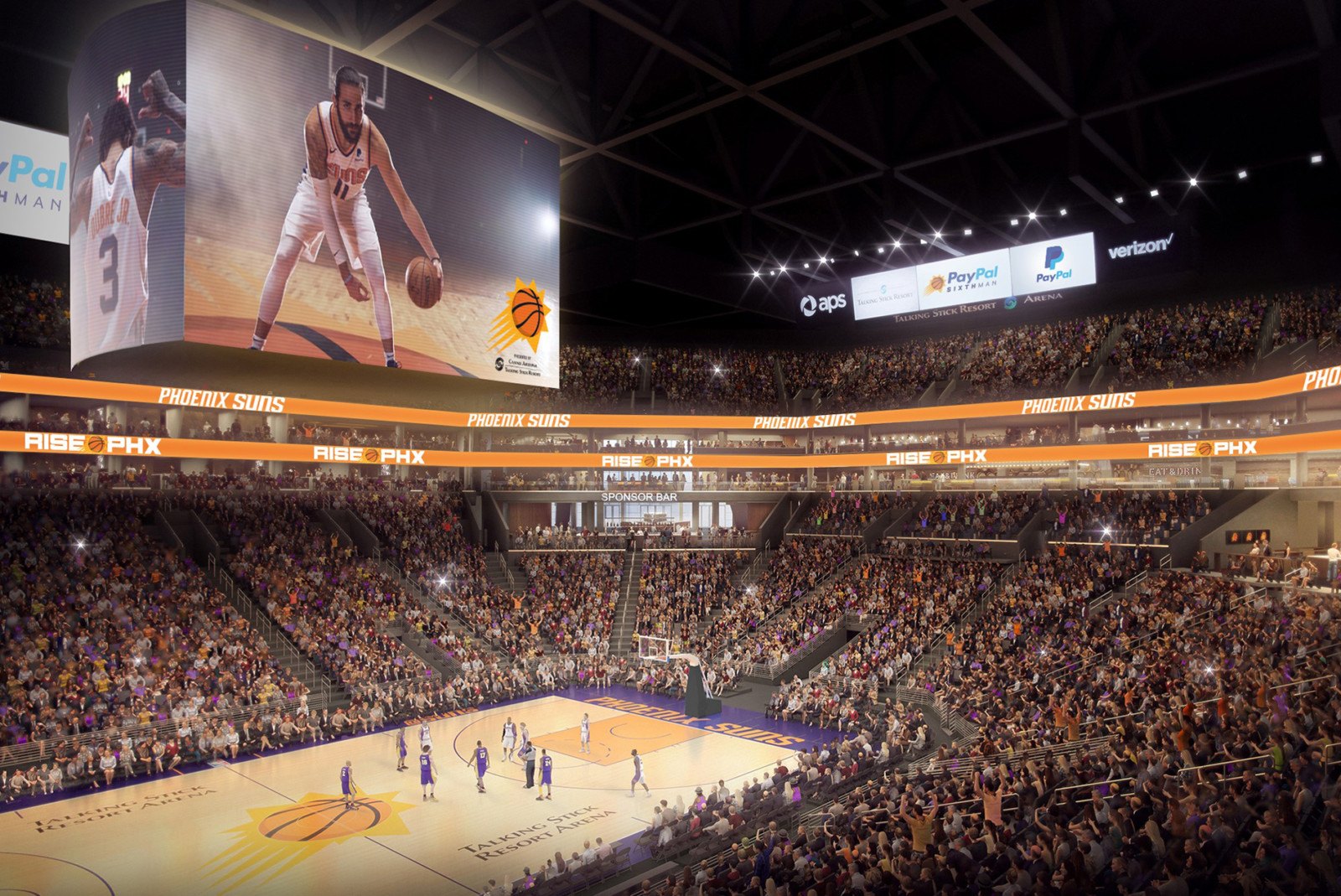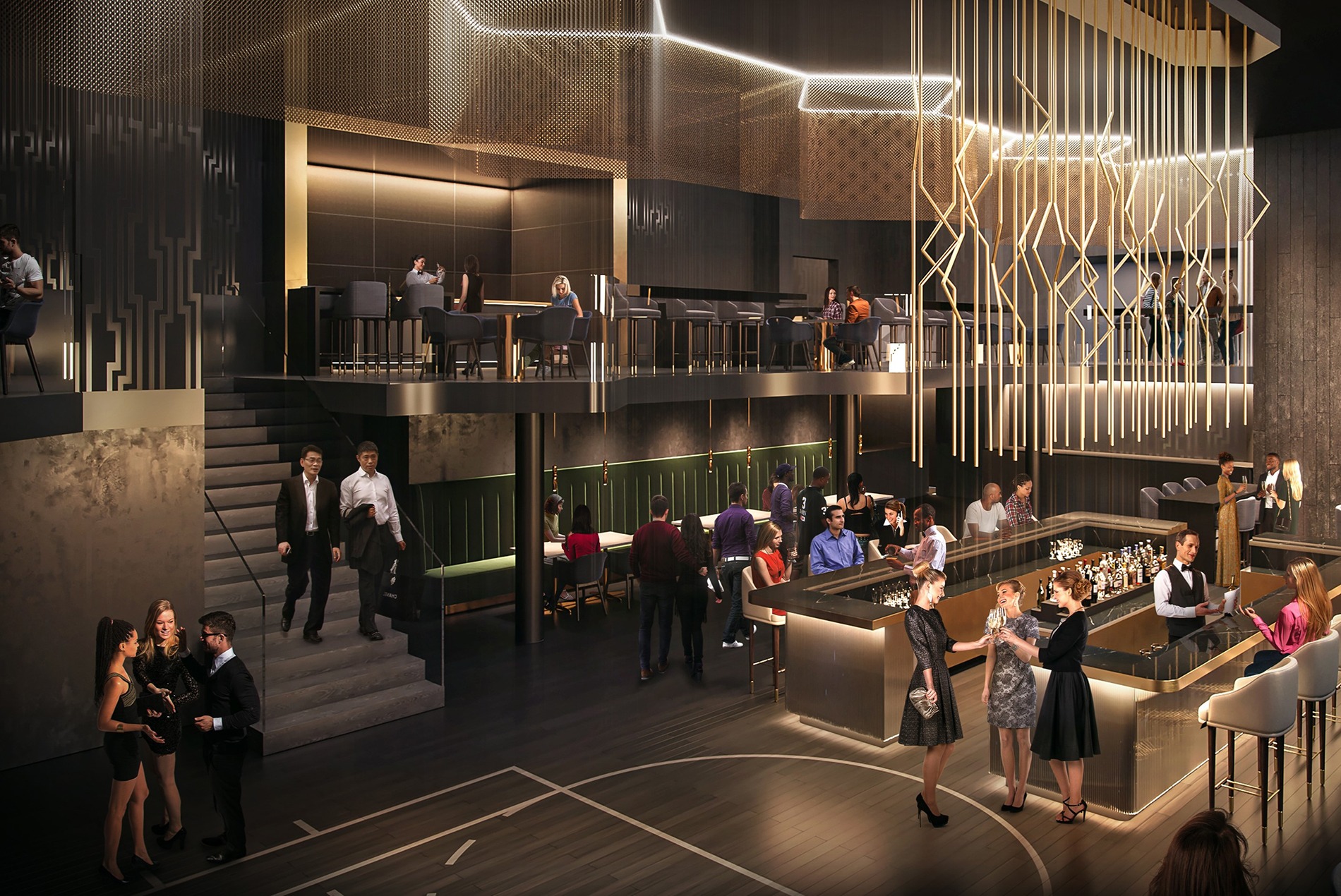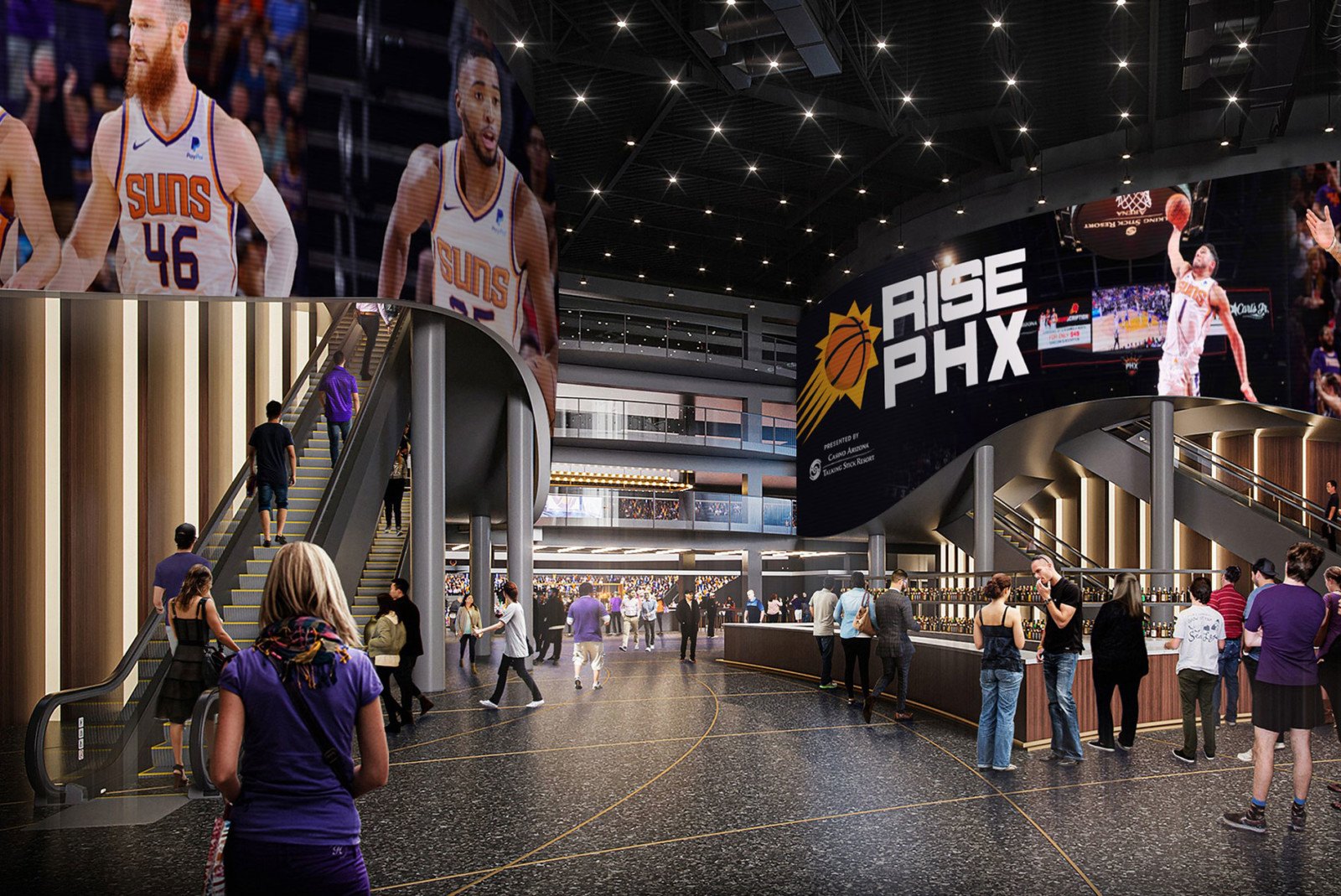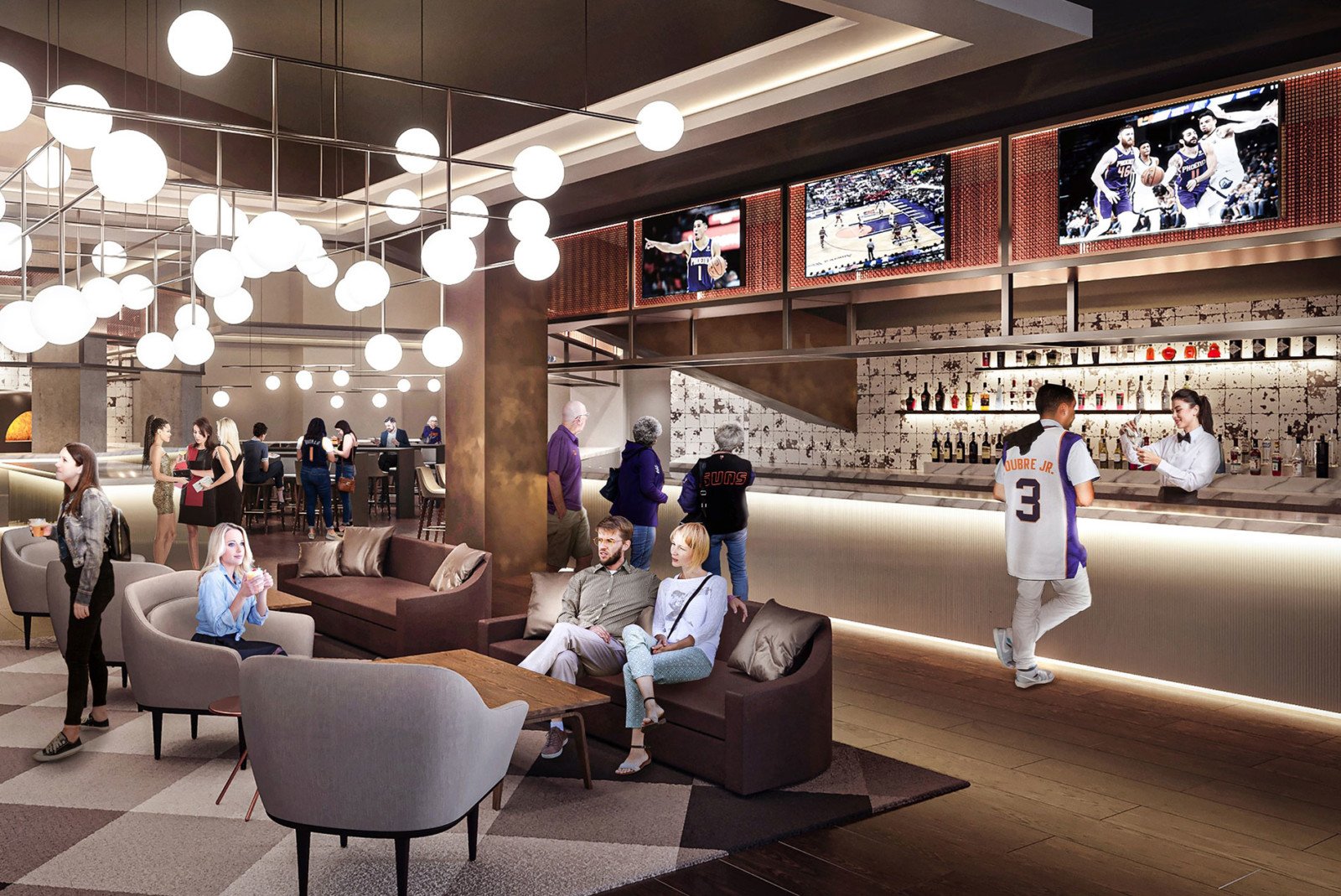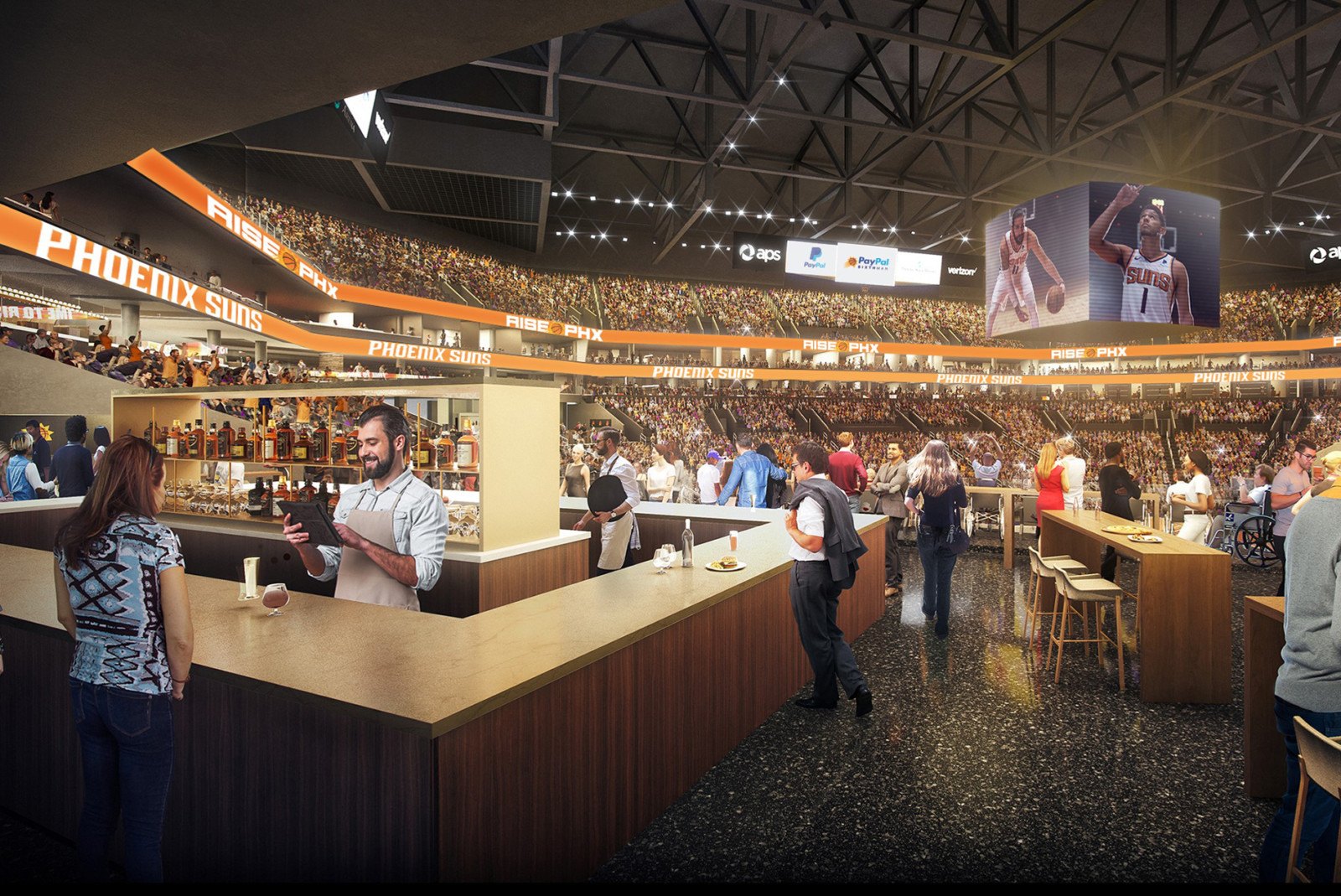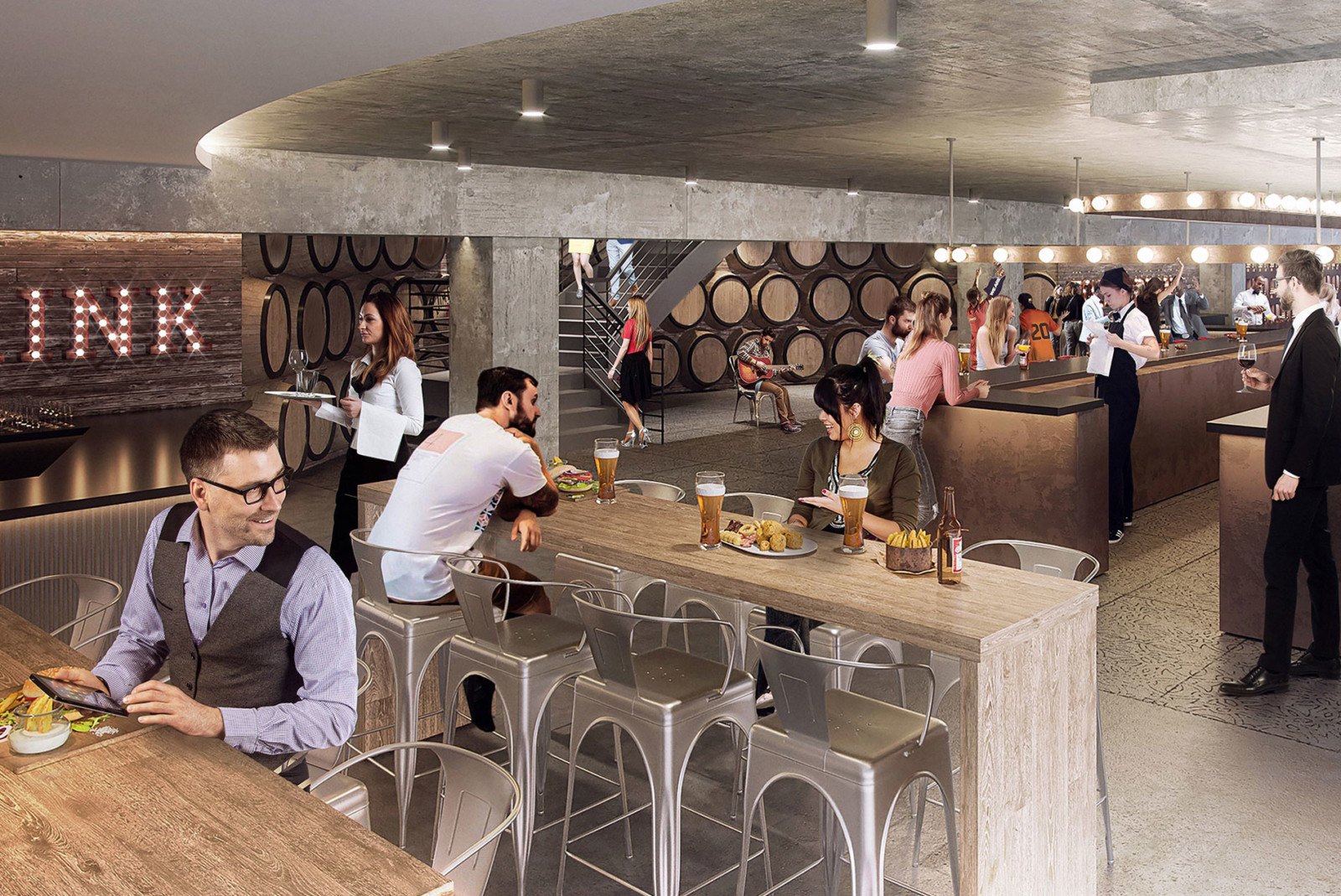Scheduled to be complete before the 2021-22 season, the $230 million, phased renovation to the league’s third-oldest arena will introduce new seating options and a courtside club and provide fans with a more dynamic event experience.
HOK’s Bill Johnson, design principal for the Sports + Recreation + Entertainment practice, and Jason Rowley, president and CEO of the Phoenix Suns, spoke with VenuesNow about the vision for the renovation of the 27-year-old arena.
Excerpted from VenuesNow:
The Phoenix Suns are transforming Footprint Center with three new event-level clubs, including a much-needed courtside club; a reconfigured entry pavilion; and two corner bars integrated into the seating bowl off the main concourse. In addition, the Suns are introducing bunker suites, a product common at other big league venues.
The renovation, dubbed Project 201: PHX Reimagined, covers a dramatic face-lift to an arena that opened in 1992 and which now stands as the third-oldest NBA facility behind Madison Square Garden and Target Center, both of which had complete makeovers during the past six years. The two-year project will be completed for the 2021-22 season.
“It’s still one of the best seating bowls in the NBA to watch basketball,” Johnson said. “It was at the front of the building boom for the NBA, a small building that didn’t have requirements for club seats and VIP spaces, and loge seating had not been invented yet. Technology has changed exponentially. It’s really tight, which is good, but also a big challenge.”
The first phase of major construction, starting next summer, covers the new clubs, the entry pavilion and the seating bowl, in which all new cushioned seats will be installed.
The crown jewel among the new club spaces is 1968, a two-level lounge on the south end of the event level, named for the year the Suns started play in the NBA. The signature elements are a center bar and an elaborate lighting fixture hanging from the ceiling, Johnson said.
The 7,500-square-foot club is the arena’s first true courtside club, reserved for the ticket holders sitting in the first two rows circling the court. Those patrons previously had access to a makeshift, pop-up club at event level that did not reflect the high price they pay for those seats.
The two remaining event-level clubs, both measuring 10,000 square feet, will be situated along the east and west sides, exclusive to ticket holders in the third and fourth rows from the court and those sitting in the first six rows between the baselines.
“We’re cutting new vomitories into the event level, and those folks will walk directly from the floor into the new clubs,” Rowley said.
Johnson said those roughly 1,000 premium patrons remaining at event level to eat and drink in their respective lounges will help relieve congestion in the arena, one of the NBA’s smaller facilities.
A pavilion, branded for Casino Arizona, serves as the main entrance. The large concrete wall that separates the front lobby from the seating bowl will be torn down to provide views to the game and the new center-hung videoboard, which is six times bigger than the existing board.
Staircases that are part of the pavilion will also be removed to provide fans with a greater connection to the game. Static advertising displays will be replaced with 8,500 square feet of LED screens that can be programmed depending on the event.
The end result will be a more dynamic, transparent pavilion with the digital screens visible from nearby office towers, Johnson said.
A large sports bar will anchor the pavilion, which will go a long way toward changing the fan experience in the entryway, Rowley said.
“The pavilion will become…a living room in downtown Phoenix, and people will love it,” Johnson said.
The second phase, taking place over the summer of 2021, focuses on the two suite levels and the lower and upper concourses.
All told, the Suns’ strategy was to develop a greater variety of premium seat products as the trends in segmentation continue to evolve in sports, Rowley said.
Editor’s note: PHX Arena was previously named Footprint Center.
